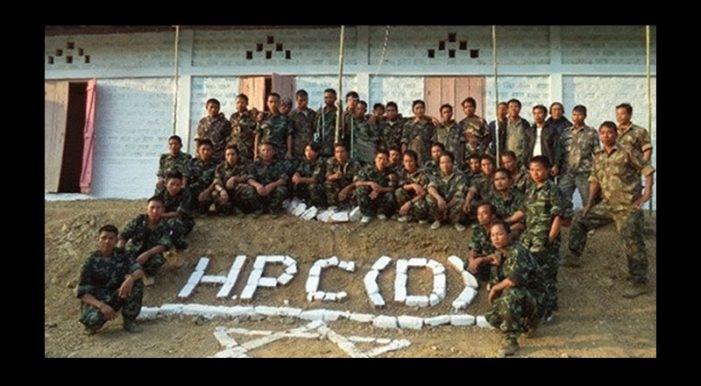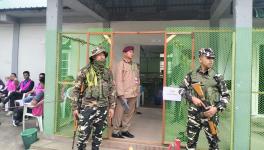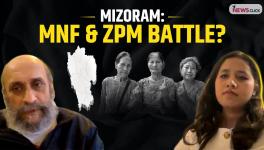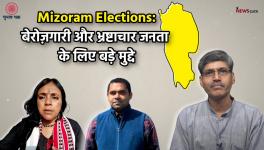One More Step Towards Closing the Chapter of Insurgency in Mizoram

Image Courtesy: The Northeast Today
On April 2, just a day after the Easter Sunday, the Mizoram government and the Hmar People’s Convention (Democratic) (HPC(D)) signed, what some have called, a ‘historic’ peace agreement. The agreement signed by H. Zosangbera, on behalf of the HPC(D), and by the Chief Secretary of Mizoram Arvind Ray, is really a Memorandum of Settlement (MoS). The MoS establishes the Sinlung Hills Council, and states that the state government “shall consult and give due regard to the views of the Sinlung Hills Council before any law is made and implemented in the Council Area on the following subjects, namely — The religious and social practices of the people living in the Council Area. [and] The customary laws and procedures of the Hmar Community.” However, despite the jubilant atmosphere at the surrender of arms ceremony, the fact is that this involves only a faction of the HPC(D).
The Hmar people are a part of the broader Chin-Kuki-Mizo group. The Hmars had actively participated in the Mizo uprising in the 1960s. When the Mizoram Accord was signed in 1986, the Hmars thought that all their lands in Assam and Manipur too would be included in the new Mizoram. However, this was not the case. The Hmars in Mizoram then formed the Mizoram Hmar Association, which later became the Hmar People’s Convention (HPC). The initial demand of the HPC was for a separate Autonomous District Council (ADC) under the Schedule VI of the Constitution of India. This too was not realised, prompting the Hmars to take up arms.
In 1994, the HPC entered a peace agreement with the Mizoram government and laid down their arms. However, the peace agreement created the Sinlung Hills Development Council within the state, but without any Constitutional protection. A section of the cadres was unsatisfied with the implementation of the agreement and returned with the arms as the HPC(D) in 1995. The HPC(D), over the years, has changed its demands from an autonomous council under Schedule VI of the Constitution to a separate Hmar-ram. In 2010, the HPC(D) entered a Suspension of Operations (SoO) agreement with the state government. After the agreement expired in 2011, the Mizoram government refused to extend it, as they claimed that the HPC(D) was violating the SoO. At this point, the leader of the HPC(D) Lalhmingthanga Sanate decided to merge the HPC(D) with the Kuki National Organisation (KNO) – a Manipur-based group. The move was opposed by some sections of the HPC(D) and they passed a motion to impeach Sanate and replace him with H. Zosangbera. This engendered a major split in the HPC(D).
In 2016, the Zosangbera faction entered talks with the Mizoram government, which was then also trying to bring the Sanate faction on board. However, in 2017, the Mizoram government put forth a precondition that the demand for an ADC under Schedule VI of the Constitution should be dropped. The Sanate faction walked out of the talks, even as the Zosangbera faction chose to stay. Thus, the MoS on April 2 was signed. Sanate was earlier arrested in Assam in February. Both the Sanate faction – under the banner of the United People’s Front (UPF) in Assam, as well as the KNO are in talks with the respective state governments.
However, ensuring a lasting peace and preventing the former militants from rising up with arms again will require great care and effort. The example of Sohan D. Shira’s Garo National Liberation Army (GNLA) should serve as a stark reminder of the things that can go wrong. One also has to remember that the HPC(D) was formed after the first agreement with a Hmar group was not implemented. While the present agreement does not confer any greater autonomy, the fact that it has been agreed to – by the Zosangbera faction at least – should signal that the Hmar people just want to be able to protect their language and culture within a Mizo state. The least the Mizoram government can do is to respect the wishes of their brethren.
Get the latest reports & analysis with people's perspective on Protests, movements & deep analytical videos, discussions of the current affairs in your Telegram app. Subscribe to NewsClick's Telegram channel & get Real-Time updates on stories, as they get published on our website.
























